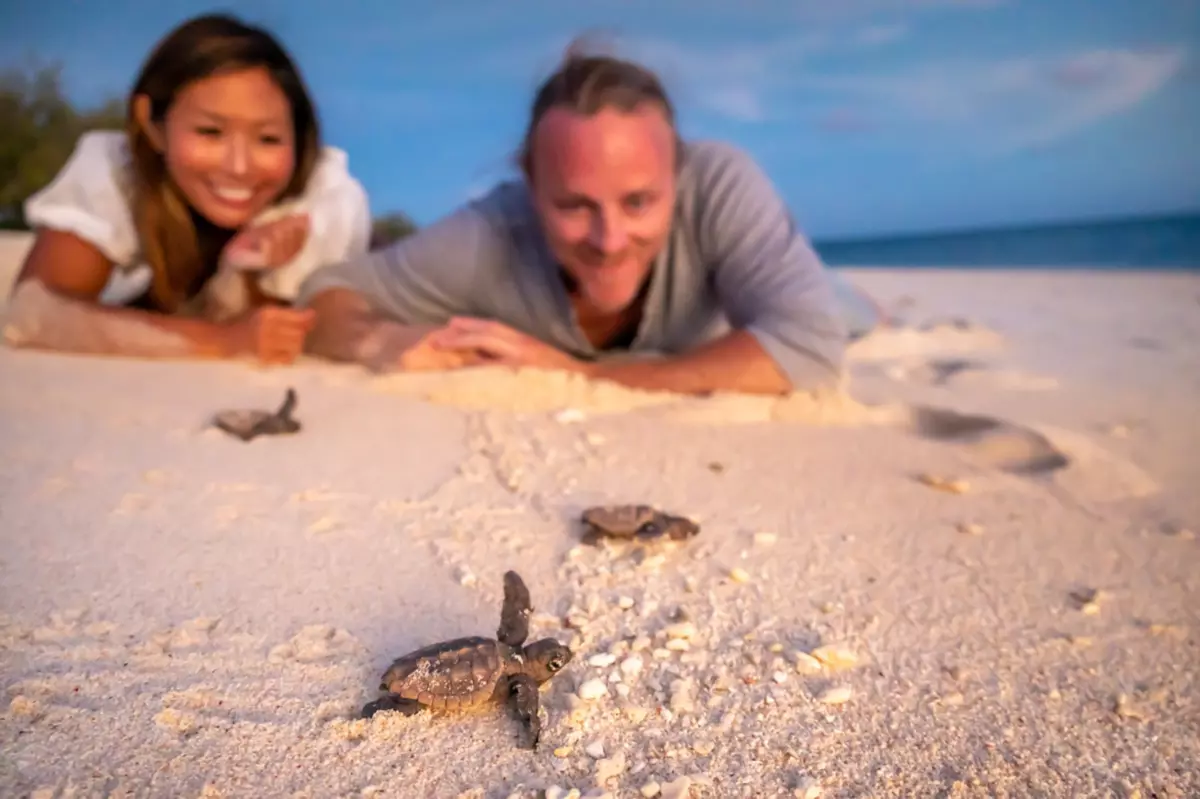Everything you need to know about turtle hatching season in Queensland
Guide

By Sarah Bristow
Count yourself lucky if you call Queensland home. Not only are our borders flooded with sunshine and picturesque landscapes, but we’re awash with an impressive population of native animals. The Sunshine State is a turtle haven in particular, with six out of seven of the world’s sea turtle species calling the Great Barrier Reef home.
Yearly, Queensland beaches are swarmed by thousands of baby turtles marching their way to the sea from their sandy nests. It’s a magical sight to behold that if not already on your bucket list, should be placed there immediately.
Eager to experience it for yourself? Follow our guide to Queensland’s hatching season below.
When is turtle hatching season in Queensland?
Save your annual leave for sometime between January to March. This is when the majority of Queensland’s shelled residents make their way to the shoreline.
Summer heat is preferred by turtles as it means the sand is warm enough to incubate eggs; these are laid between November and January, with hatching commencing six to eight weeks later.
Where are the best places to see turtles hatching?
Queensland is heavy in hatching offerings, thanks to the Great Barrier Reef where a cluster of secluded sandy beaches lie (the preference of expecting turtle mothers). The very northern and southern tip of the reef in particular are firm favourites for the marine creatures during turtle hatching season in Queensland.
Southern Great Barrier Reef
Heron Island turtle hatchling season | By @Aleksmutated
- Mon Repos
Neighbouring Bundaberg you’ll find Mon Repos, a hatching hot spot supporting the largest population of nesting marine loggerhead turtles in the South Pacific. It’s also the site of the new multi-million dollar Mon Repos Turtle Centre; an information centre, conservation and long-term research monitoring centre in one. Plan well in advance as the nighttime guided tours from the Centre can book out for the season quickly. - Lady Elliot Island
Three species of sea turtles frequent Lady Elliot Island: the hawksbill, green and loggerhead turtles. Aside from leading hatching viewing expeditions, the island also hosts a Reef Education Centre for educating about marine turtle research and conservation. - Lady Musgrave Island
The protected lagoon of Lady Musgrave is a favourite for snorkellers, but during nesting season it’s a prime location to glimpse green, loggerhead and even the endangered hawksbill turtles set forth on their journey out to sea. - Heron Island
Fellow diving favourite Heron Island is on the border of the southern stretch of the reef. Green and loggerhead turtles flock to this coral cay to lay eggs once the time comes. - Great Keppel Island
The 17 sandy beaches of Great Keppel Island mean that our shelled friends have plenty of birthing suites to choose from. The island is a particular favourite for the flatback turtle, with the island an important breeding rookery for the species.
Tropical North Queensland
- Green Island
As its name suggests, Green Island attracts its namesake turtle in their droves. Conveniently, this coral cay national park sits close to Cairns and is an easy day trip or overnighter with a resort for accommodation. - Fitzroy Island
A sanctuary for sick and injured sea turtles can be found on Fitzroy Island, where the Cairns Turtle Rehabilitation Centre (CTRC) is based. The volunteer-operated, non-profit organisation expanded from the mainland to the island in 2013 due to growing demand.
What should you know about hatchlings before you go?
- Newly hatched baby turtles weigh between 15 and 30 grams, and measure 5-7 centimetres.
- While in the nest, hatchlings use the earth’s magnetic field to create an internal GPS. This is then used to find their way back to their birthplace when it comes time for them in turn to nest.
- Only 1 out of 1000 hatchlings make it to the breeding age of 30. The average lifespan of a sea turtle is between 50 and 80 years old.
- Head for your hatching spot at night. This is the best time to see them, as temperatures are cooler and there’s less chance of being caught by predators.
- Keep your torch at home: when turtles hatch they instinctively head towards the lowest natural light, which is the horizon over the open ocean.
Want to learn more about baby turtles and hatching season?
- Take a look at our collection of surprising sea turtle facts
- Plot your trip with our hatchling hot spot guide to the Southern Great Barrier Reef
- Use our Great Barrier Reef animal guide to show you where you can swim with the gentle giants
- Learn more about Lady Elliot Island’s status as a turtle sanctuary (among other marine life)
Find out more about turtles in Queensland





















